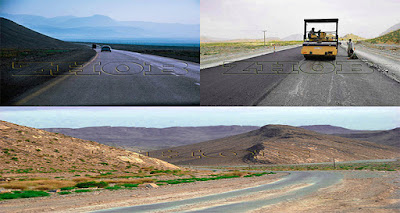Zhob District (Balochistan)
Zhob (Balochistan)
The Balochistan Locale Improvement Profile 2010 is a milestone exercise of the Preparation and Advancement Division, Legislature of Balochistan, to refresh region profile information that was first ordered in 1998. The profiles have been refreshed to give a succinct milestone expected to improve arranging, checking, and the executive's purposes. These regions' profiles would act as an instrument for specialists, improvement professionals, and chiefs/experts by giving them immense data wrapping over 18 components of Balochistan's headway degree. These profiles have been changed by removing and summing up exceptional, immense, and far-reaching data on the financial status and assets of each region.
Improvement arranging in Balochistan has forever been moving for organizers because of its troublesome and tough landscape, and remote and meagerly populated locales.
This by and large hinders an educated arranging process because of restricted information on the areas focused on for improvement. Work has been made to group and present data regarding sociocultural, financial, and segment status, the situation with useful and social areas, and locale assets. This work can be viewed as special for the Balochistan Region when found regarding GIS-based planning as nitty gritty datasets. Items in the profiles show linkages among populated regions and social area conveniences. Maps have been arranged to work with divisions/organizations associated with advancement works in ideal and successful direction in regards to the arrangement of well-being, training infrastructural offices, and so forth to the general population at large. The map book gives a geological perspective on the regions of the locale and the degree of detail goes up to Association Committees. The subtleties include the spatial spread of the populace, well-being offices and their inclusion, the situation with schooling and education, and an outline of other social and useful areas. The general data incorporates fundamental graphical and alpha-numeric features of geospatial content that can be considered basic for any sort of improvement action. The configuration of the profiles makes data effectively reasonable and promptly open to a general gathering of clients, including leaders, organizers, convenience suppliers, specialists, and important partners. The information chosen for the object is viewed as indispensable for strategy advancement, neighborhood (level) arranging, and for checking and assessment of social area administrations. It is additionally of significant importance for proposing enhancements in asset assignment at the full-scale level, i.e., actual regions, administrations, and populace gatherings. Information has been gathered from the line divisions of each region, common reports, departmental MIS, and significant family studies like MICS and PSLM. As of now, without any other single far-reaching data asset, the region profile will act as a prepared reference for chiefs helping them in completing more educated navigation and ensuing making arrangements for the provisioning of conveniences to individuals of Balochistan, and at last to serve our country as entirety.
DISTRICT MAP:
Region-wise locale Zhob positions 10 biggest locales in Balochistan and has an area of 12,400 square kilometers, Zhob Area
lies between 67°48'41"- 69°44'43" East longitudes and 30°26'54"- 31°57'8" North scopes comprising of 2 Tehsils and 24
Association Boards. The area of Zhob is 430 km (airborne distance) south-west (223 degrees course) of Pakistan's Capital City
Islamabad and 260 km upper east (61 degrees bearing) from Quetta City, the commonplace capital of Balochistan.
History of District:
Zhob is a humble community and locale capital of the Zhob Region in the Balochistan territory of Pakistan at a height of 4,678 ft. (1,426 m). Zhob is situated on the banks of Zhob Stream. The city was initially named Apozai after a nearby town. During the provincial time, it was named Stronghold Sandeman. It got its ongoing name on the 30th of July 1976, when the then Head of the state of Pakistan, had the name changed. A Chinese pioneer, Xuan Zang, who visited the locale in 629 Promotion referenced Pashtuns living in Zhob. Until the Zhob Valley endeavor of 1884, the region was basically obscure to Europeans, and in 1889 the Zhob Valley and Gomal Pass were heavily influenced by the English Government. In December 1889 the town of Zhob, then, at that point, known as Apozai, was involved by the English and named Post Sandeman after Sir Robert Sandeman. The locale of Zhob was shaped in 1890, with Post Sandeman as the capital. The populace was 3552, as indicated by the 1901 registration of India. The tactical post incorporated a local cavalry and a local infantry regiment. It was likewise the central command of the Zhob Toll Corps. In 1894 a stock of water from the Saliaza Valley was laid out, permitting a water system and planting of products of the soil and giving drinking water. During the pioneer period, the Political Specialist dwelled in a structure known as "the Palace" that lay toward the north of the town and 150 feet (46 m) over the outer layer of the plain. The tactical lines, marketplace, dispensaries, and school lay underneath. During this time the rail line framework was constructed.
Roads:
Railway line:
Zhob is connected by rail with the Pakistan Rail Lines organization. In 2006, the Pakistan Railroads changed over the restricted check rail line track into a wide measure. The Zhob line separates the Chaman line north of Quetta at Bostan. A more straightforward course to the capital through Dera Ismail Khan and Darya Khan is likewise proposed. The new venture will connect Quetta with Peshawar through Bostan, Zhob, Dera Ismail Khan, Bannu, and Kohat.
Air terminal:









Post a Comment